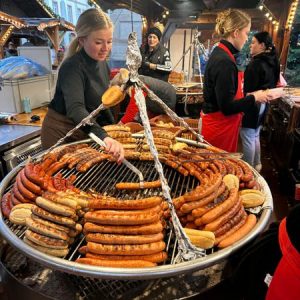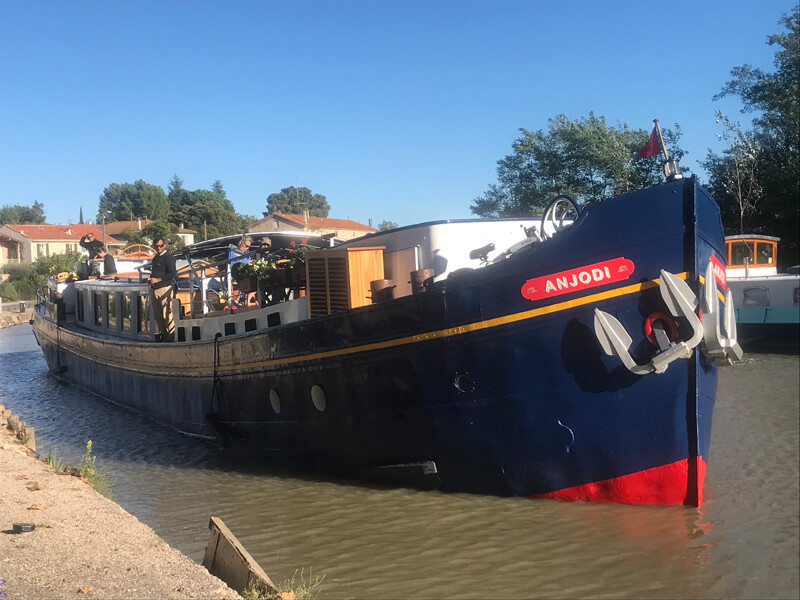 Kathryn Liston takes a slow barge along the historic Canal du Midi past pretty vineyards and boutique wineries, Cathar castles and Roman remains, while enjoying gastronomic cuisine and fine wines along the way.
Kathryn Liston takes a slow barge along the historic Canal du Midi past pretty vineyards and boutique wineries, Cathar castles and Roman remains, while enjoying gastronomic cuisine and fine wines along the way.
“Just don’t say rabbit”, warned captain Laurent as we boarded the Dutch hotel barge, Anjodi, at Marseillean, “it’s bad luck”. Apparently, in days gone by, rabbits used to eat through the bars of their cages and the ribs of the boat and it sank.
Not that we saw any bunnies as we fine dined our way around the Languedoc region of southern France, following in the footsteps of Cathars, Romans and celebrity chef Rick Stein, whose French Odyssey TV series was filmed on the barge.
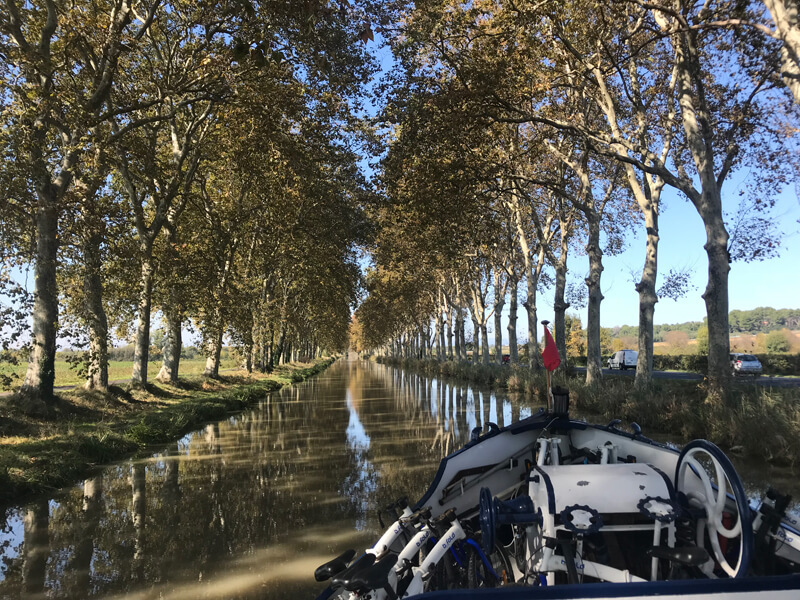 Monk fish with beurre blanc sauce and black tagliatelle, blue lobster and avocado, cocoa foie gras and a succulent hay-smoked beef tenderloin with roquefort sauce were beautifully cooked and presented by our onboard Michelin-trained chef Vivien every day – just like a magician pulling a rabbit from a hat. Oops, that word again.
Monk fish with beurre blanc sauce and black tagliatelle, blue lobster and avocado, cocoa foie gras and a succulent hay-smoked beef tenderloin with roquefort sauce were beautifully cooked and presented by our onboard Michelin-trained chef Vivien every day – just like a magician pulling a rabbit from a hat. Oops, that word again.
Potatoes were candied, peas and pumpkins velouted and pureed, citrus confited and bacon foamed. Even Vivien’s grandma’s quiche recipe took a star turn.
One lunchtime, under a warm autumn sun, we dined on platters of ocean-fresh langoustine, oysters, prawns and whelks bought at the market in Narbonne the previous day. Sweet choux buns that followed were as light as a puff of air.
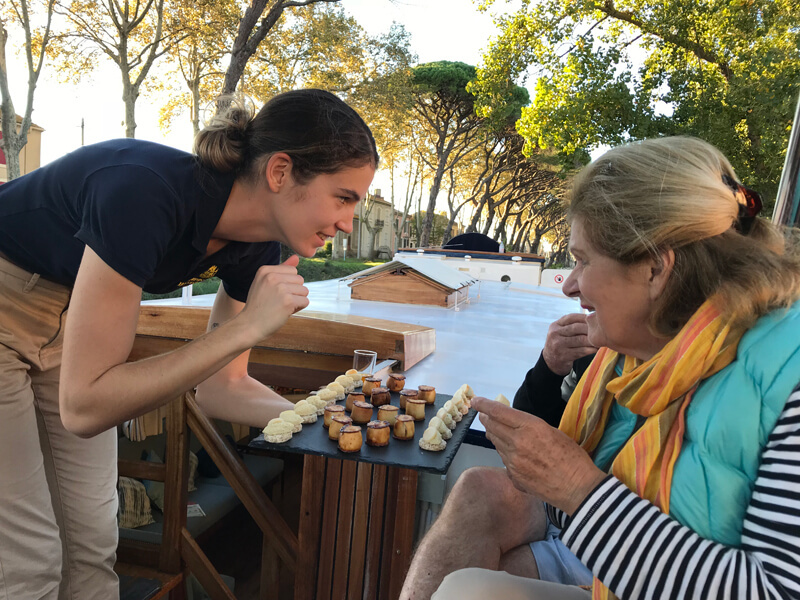 We followed our noses through the vineyards of Languedoc – and the excellent cheeses of France – under the expert guidance of Sandra, the sommelier, who introduced us to the complexities of the syrah, cairgnon, grenache and mourvedre grapes most commonly blended in the region’s red wines. Languedoc wines typically blend two or more grape varieties.
We followed our noses through the vineyards of Languedoc – and the excellent cheeses of France – under the expert guidance of Sandra, the sommelier, who introduced us to the complexities of the syrah, cairgnon, grenache and mourvedre grapes most commonly blended in the region’s red wines. Languedoc wines typically blend two or more grape varieties.
For the white and roses, we learned about the three colours – blanc, noir and gris – of the grenache, carignan, picpoul and terret grapes. On occasion, we strayed into Burgundy.
With our wine noses finely-tuned, we tested them out in a fun quiz, sniffing and identifying fruits and essences often identified in wine – lemon, raspberry, even burnt toast. It brought the week’s wine-quaffing experiences alive.
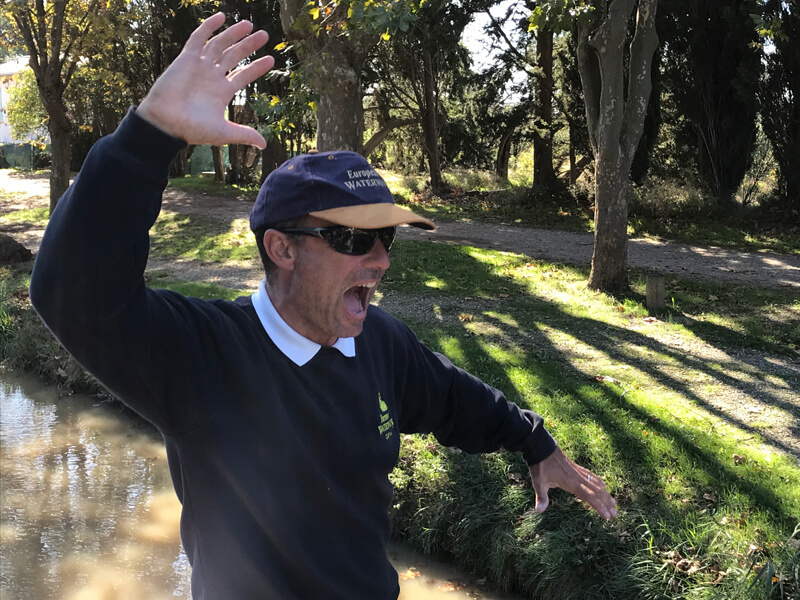 Each day took on a familiar routine – cruising in the morning, an al fresco lunch on deck, an afternoon excursion and free time before dinner to relax in the hot tub on deck, read or cycle. With only eight guests (Aussies, Americans and Brits) and four crew onboard, the ambience was more house-party than hotel – and our fellow guests turned out to be very good company.
Each day took on a familiar routine – cruising in the morning, an al fresco lunch on deck, an afternoon excursion and free time before dinner to relax in the hot tub on deck, read or cycle. With only eight guests (Aussies, Americans and Brits) and four crew onboard, the ambience was more house-party than hotel – and our fellow guests turned out to be very good company.
Pootling along at a steady 2-4km an hour, we ambled past pin-neat vineyards bereft of their juicy fruits, wading grey herons stalking their next fishy feast, and tall slender grasses bowing their bulbous flossy heads. We exchanged “bonjours” with fellow boaters and families walking on the tow path. Occasionally, I joined them there and cycled to our next mooring, embracing the peace and solitude.
With 330 years of history, the canal is one of Europe’s oldest and most impressive, particularly the flight of seven locks at Fonserranes. Spectators watched as we ascended the flight, the cascade of water shooting through the lock gates buffeting and jostling the barge from side to side. It’s one-way traffic up in the morning, and down during the afternoon.
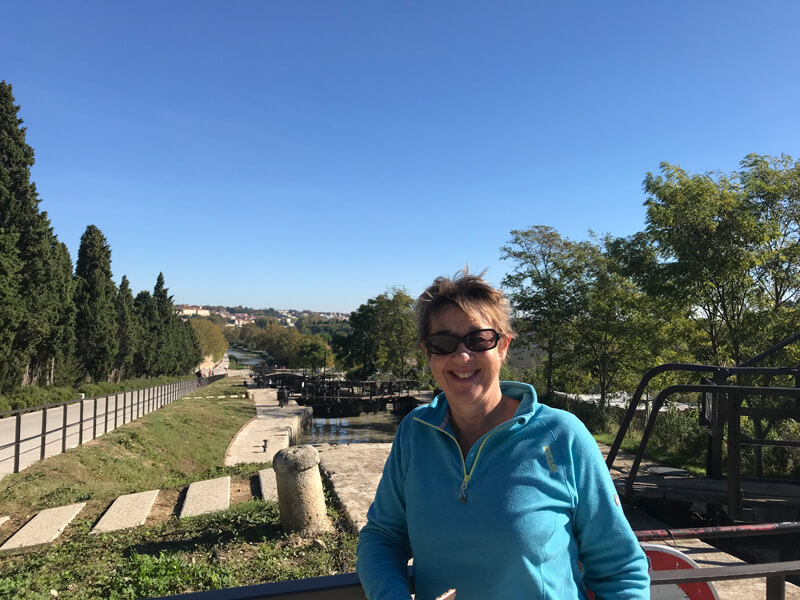 We disembarked at the top and watched an interesting film at the information office on this amazing feat of engineering, built by Paul Riquet (1666-1681) to transport wine and grain between the Mediterranean and Atlantic.
We disembarked at the top and watched an interesting film at the information office on this amazing feat of engineering, built by Paul Riquet (1666-1681) to transport wine and grain between the Mediterranean and Atlantic.
Another attraction of this area is the wealth of Cathar history, which we found in the charming fortified town of Minerve. A 10-week siege by crusader Simon de Montfort in 1210, ended with 140 Cathar martyrs being burnt alive at the stake here for refusing to denounce their religion. There’s a moving memorial to them on the hillside overlooking the valley and a street called Rue des Martyrs, where they walked to their deaths.
We followed in their footsteps through the narrow alleyways, stopping off to visit the charming 12th-century church and museum, and passing by the fortress’s candela, the only part that remains. We descended down the deep limestone gorges, passing by one of the giant catapults de Montfort used to destroy the village.
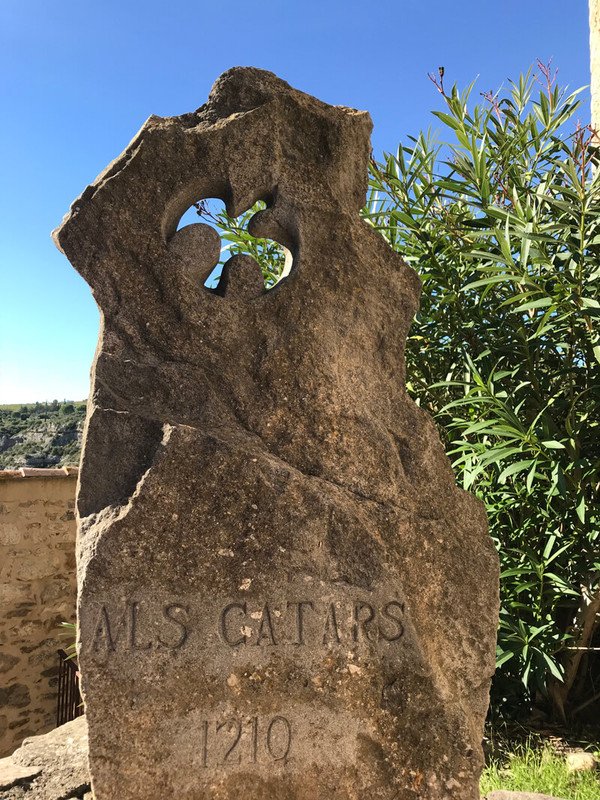 Later in the week we visited another Cathar stronghold, the picturesque medieval fortified city of Carcassonne, and followed once again in their footsteps around the restored castle, city ramparts and narrow shop-lined streets.
Later in the week we visited another Cathar stronghold, the picturesque medieval fortified city of Carcassonne, and followed once again in their footsteps around the restored castle, city ramparts and narrow shop-lined streets.
All the excursions were included in the cruise fare and led by the ship’s guide, Fabian. At 16th-century Pezenas, Fabian regaled us with stories about the playwright Moliere who lived there for 10 years – it’s also famous for its arts and crafts.
Unsurprisingly, wine featured too. At the Noilly Prat winery in Marseillan, we discovered the secrets of the vermouth’s herb and spice recipe, which has been hand-stirred since 1855. We also visited Chateau de Perdiguie in Maraussan, owned by the King Charles V of France in 1375, and one of France’s oldest vineyards.
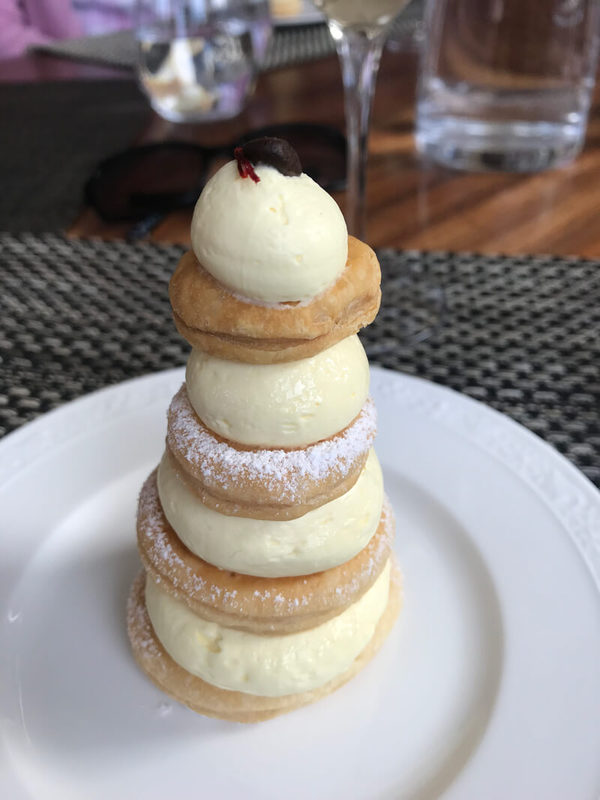 In Narbonne (founded in 118BC), we marched through Roman history, via the Via Domitia road, built to link Rome and Spain, admired the unfinished Gothic cathedral with its amazing stained- glass windows and 8th-century organ, and attempted to work off the week’s calories by climbing the tower of the Archbishop’s Palace.
In Narbonne (founded in 118BC), we marched through Roman history, via the Via Domitia road, built to link Rome and Spain, admired the unfinished Gothic cathedral with its amazing stained- glass windows and 8th-century organ, and attempted to work off the week’s calories by climbing the tower of the Archbishop’s Palace.
A visit to the town’s huge indoor market proved fascinating, its stalls piled high with displays of vegetables, skate wings, octopus, tripe, cheeses and, dare I say it – rabbit. We returned to the barge with our fingers crossed. We need not have feared. Our cosy floating home was there to welcome us back with yet another fine-dining feast.
For more information visit europeanwaterways.com
European Waterways operates 17 luxury hotel barges across nine European countries. They can accommodate between six and 20 English-speaking passengers. Barges are also available for private charter and themed cruises include walking, cycling, golf, whisky, wine, food and opera.

